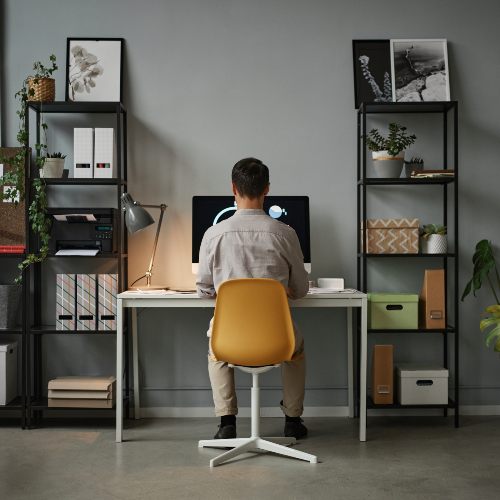
Untidy Workspace? Here’s How You Can Organise Your Desk!
Unpacking The Clutter
Believe it or not, keeping your work desk tidy and organised is integral to your work performance and overall productivity.
Why? For one thing, it will help keep you on top of your workload. It can also increase your concentration levels, decrease your stress levels, and keep you motivated. However, a cluttered desktop can produce an entirely opposite effect: per expert opinion, it can lead to feelings of overwhelmingness, which in turn can hinder your concentration, encourage procrastination and increase your anxiety.
Fortunately, there are a few ways to declutter your desk for the better!
Clearing Away The Clutter
When tidying your desk, keep these five tips in mind:
- Sanitise The Surface
How often do you disinfect the surface of your desk? According to recent studies, desks contain 21 000 germs per square inch, which makes them three times dirtier than toilet seats!
This is due to the fact that we spend the majority of our time eating, drinking, and working at our desks – leftover coffee cups, food crumbs, unclean stationery, dirty keyboards and dust are among the things that lead to an accumulation of germs and bacteria. In other words, your desk is a breeding ground for potential viruses and infections that can result in your falling seriously ill.
Use multi-surface disinfectant wipes or cloths to wipe down your desk. Then, do the same for your stationery (pens, scissors, stapler, etc), your storage trays, and the coasters you use for your cups and plates.
Don’t forget to clean your hardware regularly as well: use electronic wipes to gently clean the keyboard, screen and exterior of your PC or laptop, as well as your mouse, tablet, mobile phone and other electronics.
- Divide Your Drawers
It’s easy for drawers, if left unsorted, to become untidy very quickly. This makes trying to find certain files, stationery or power cables difficult. It also distracts you from the work at hand.
Consider using drawer dividers or small, slottable trays to store your supplies and to keep them separated from each other. Label these drawers or trays accordingly – this not only makes it easier and quicker to find a certain item, but it will also help you remember where to put it back. That way, your paperclips won’t get lost under a sea of pens, or your pile of sticky notepads won’t obscure your day-planner.
- Expand Your Storage
Need a place to store your electronic devices when you’re done with them? Or perhaps you’re struggling to find a place to store your paperwork? This can prove problematic, especially if your deskspace is small or you have little-to-no drawers.
Invest in built-in shelving, a bookcase, a filing cabinet or stackable trays. For example, stow your laptop and tablet on a high shelf above your desk, while file away documents such as contracts, project plans and receipts in a cabinet that’s situated in your office or study.
- Clear Your Desktop
The more things you leave lying on your desk, the more the piles will grow until there’s no space left.
Get into the habit of clearing your desk of coffee cups, bottles, devices and stationery at the end of each workday. If there are items that are old, unused or nearly finished (eg. old computer monitors, broken scissors, ink cartridges, etc), sort through these to determine what can be donated, sold or recycled.
- Keep Desk Decor Simple
There are plenty of ways to make your desk practical and aesthetically pleasing: a pot plant here, a table lamp there, and cute ornaments in between … the possibilities are endless. However, this may just increase the likelihood of cluttering your desk, which in turn can hinder your focus.
Stick to a minimalist theme as best as you can. Furnish and decorate your desk with only the essentials. The more crisp and clean your workspace looks, the more relaxed and motivated you will feel.
Clutter-Free!
By putting these methods into practice, you will be able to keep on top of the clutter in no time. It will also improve your overall mood, productivity and long-term work performance.
